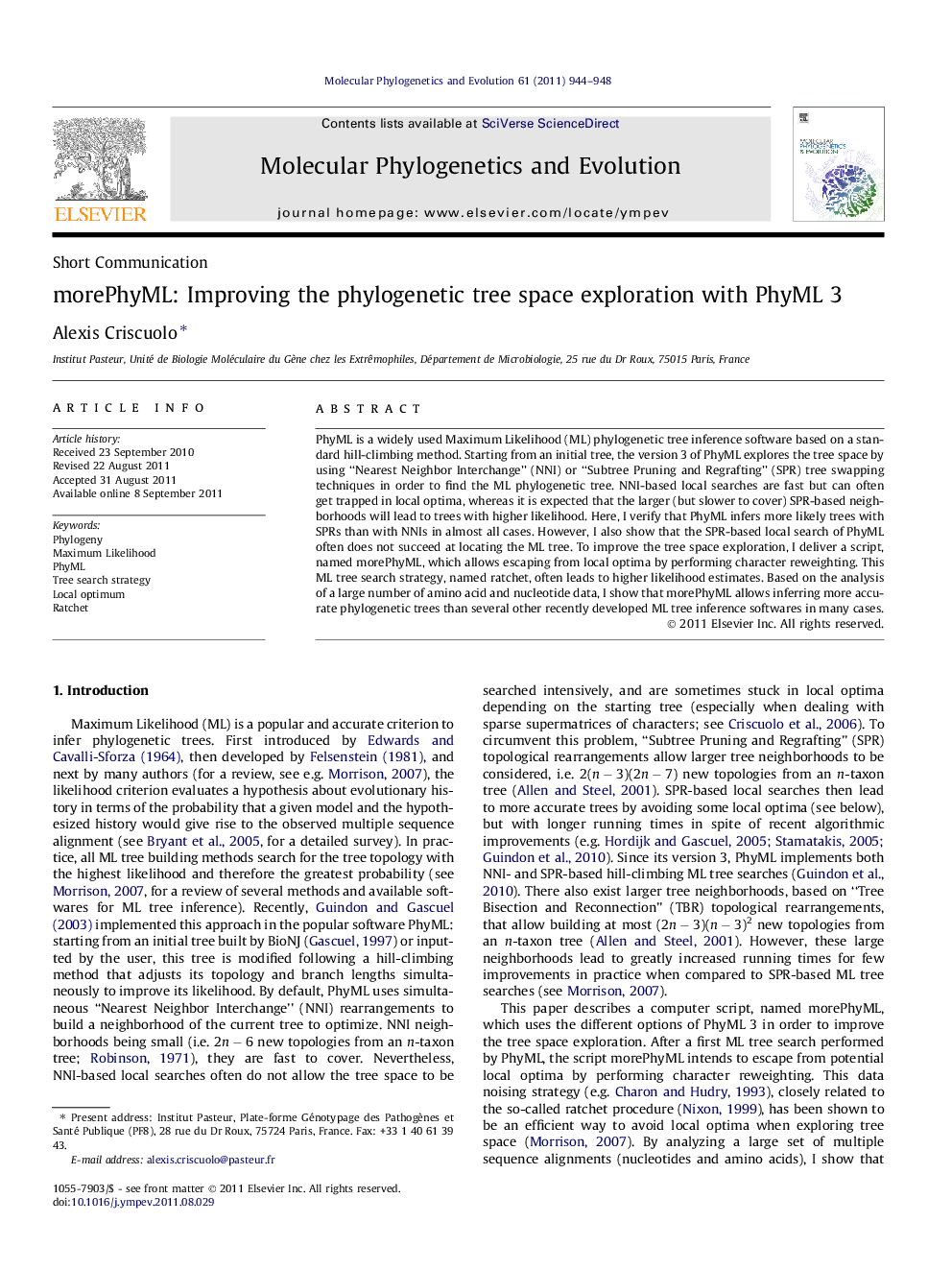| Article ID | Journal | Published Year | Pages | File Type |
|---|---|---|---|---|
| 5920650 | Molecular Phylogenetics and Evolution | 2011 | 5 Pages |
PhyML is a widely used Maximum Likelihood (ML) phylogenetic tree inference software based on a standard hill-climbing method. Starting from an initial tree, the version 3 of PhyML explores the tree space by using “Nearest Neighbor Interchange” (NNI) or “Subtree Pruning and Regrafting” (SPR) tree swapping techniques in order to find the ML phylogenetic tree. NNI-based local searches are fast but can often get trapped in local optima, whereas it is expected that the larger (but slower to cover) SPR-based neighborhoods will lead to trees with higher likelihood. Here, I verify that PhyML infers more likely trees with SPRs than with NNIs in almost all cases. However, I also show that the SPR-based local search of PhyML often does not succeed at locating the ML tree. To improve the tree space exploration, I deliver a script, named morePhyML, which allows escaping from local optima by performing character reweighting. This ML tree search strategy, named ratchet, often leads to higher likelihood estimates. Based on the analysis of a large number of amino acid and nucleotide data, I show that morePhyML allows inferring more accurate phylogenetic trees than several other recently developed ML tree inference softwares in many cases.
Graphical abstractDownload full-size imageHighlights⺠PhyML sometimes does not succeed at locating the Maximum Likelihood tree. ⺠morePhyML uses PhyML to perform Maximum Likelihood tree searching with ratchet. ⺠morePhyML allows inferring more likely trees than PhyML in many cases.
